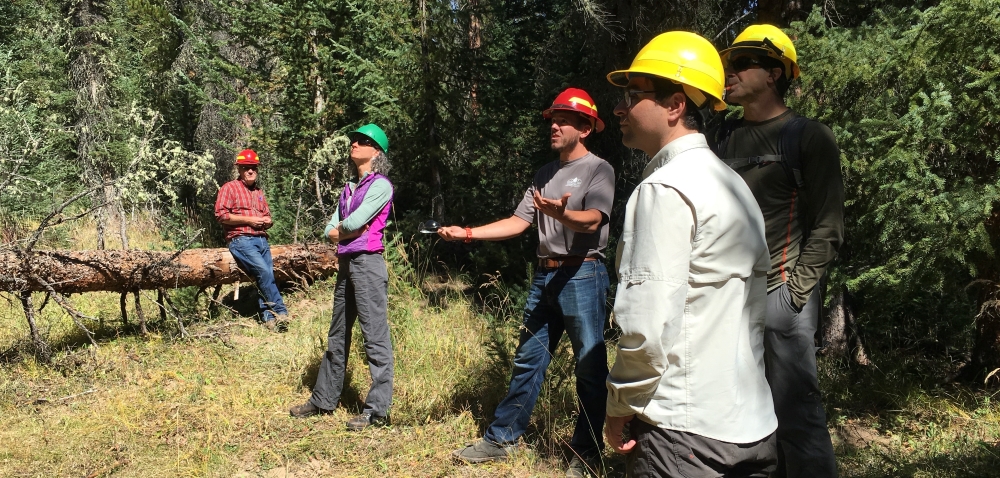Colorado State University, the Northern Institute of Applied Climate Science (NIACS), the Colorado State Forest Service (CSFS), and the USDA Forest Service Rocky Mountain Research Station recently hosted a virtual climate change adaptation workshop for folks working on the ecology and management of spruce-fir forests.
This workshop is part of a project titled the Adaptive Silviculture for Climate Change (ASCC) Network, which is a collaborative effort between managers and scientists working to establish a series of experimental trials across a network of diverse forest ecosystems throughout North America. Each trial is focused on understanding and evaluating management options designed to enable forests to respond to a changing climate.
The ASCC experiment at the Colorado State Forest explores this spectrum of adaptation options ranging from resistance to transition1,2:
- Resistance –maintain relatively unchanged conditions over time
- Resilience – allow some change in current conditions, but encourage eventual return to original conditions
- Transition – actively facilitate change to encourage adaptive responses
All of the sites that are a part of the ASCC Network explicitly test these three adaption options, linking them to site-specific management objectives, desired future conditions, and silvicultural actions. Our working definitions below closely follow Millar et al. 20071. Site-specific treatments were developed at the Colorado State Forest according to local conditions and tailored to meet site-specific management objectives, while at the same time aligning under the common ASCC framework for answering questions about how different forest types will respond to future climate.

The Colorado State Forest ASCC workshop on spruce-fir forests served two primary purposes:
- To engage managers and scientists in the ASCC co-development framework to create a suite of adaptive experimental silvicultural treatments for a Colorado State Forest spruce-fir forest as be part of the ASCC Network; and
- To begin defining research and monitoring questions as part of the Colorado spruce-fir ASCC installation.
After three days on Zoom, which participants said flew by, partners answered the question: What actions can be taken to enhance the ability of a system to cope with change while continuing to meet management goals and objectives at the Colorado State Forest? Workshop participants developed a suite of adaptation actions designed to specifically address climate change impacts and vulnerabilities to high-elevation spruce-fir forests. This includes continuing management practices that are currently taking place to protect high-elevation forest watersheds, and trying something new and different to address climate change, such as transitioning from a spruce-fir forest to a pine-dominated forest type.
Next steps include refining the final treatment prescriptions, laying out the treatment units at the Colorado State Forest, collecting pre-treatment data, implementing the treatments, and partnering with researchers to begin collecting post-treatment monitoring data. Stay tuned for more details on the Colorado State Forest ASCC project here: www.adaptivesilviculture.org.
References:
1Millar, C.I., N.L. Stephenson, and S.L. Stephens. 2007. Climate change and forests of the future: Managing in the face of uncertainty. Ecol. Appl. 17(8): 2145-2151.
2Nagel B.J. Palik, M.A. Battaglia, et al. 2017. Adaptive Silviculture for Climate Change: A National Experiment in Manager-Scientist Partnerships to Apply an Adaptation Framework. Journal of Forestry 115:167-178. http://dx.doi.org/10.5849/jof.16-039
3Swanston, C.W., M.K. Janowiak, L.A. Brandt, et al. 2016. Forest adaptation resources: Climate change tools and approaches for land managers, 2ndedition. USDA Forest Service General Technical Report NRS-87-2, Northern Research Station, Newton Square, PA. 161p.

